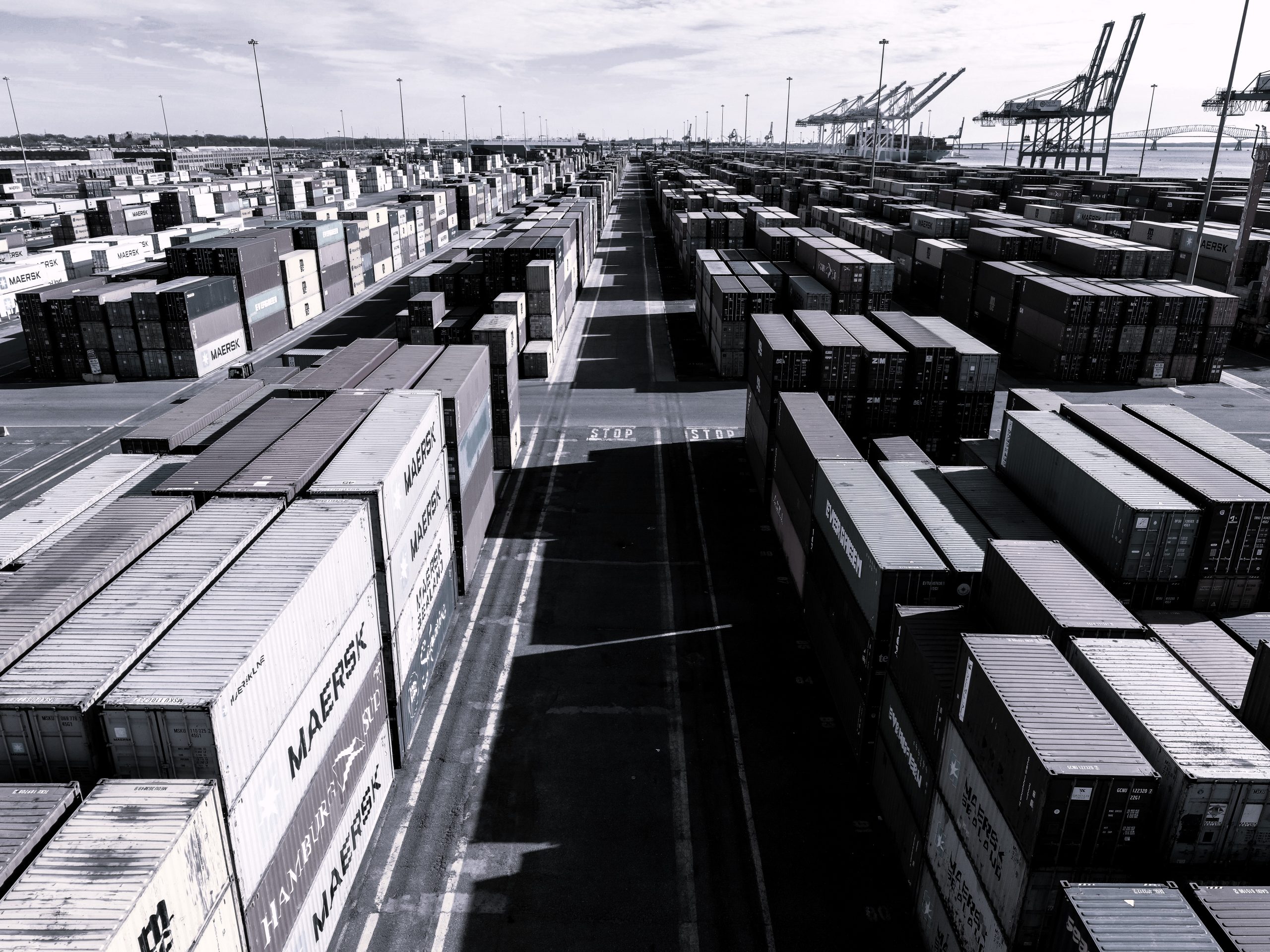For advocates of free trade and globalisation, tariffs are always bad. Reality is, as ever, more nuanced.
With President Trump ensconced in the White House once again and busy with executive orders, the issues of tariffs on foreign trade and taxes on foreign companies and individuals are now front and centre.
On his first day back, Mr Trump hinted that both Canada and Mexico may be hit with tariffs of up to 25% as soon as 1st February. China may also suffer higher tariffs, with developments there linked to the future of the social media platform Tik-Tok. Canada’s Justin Trudeau has hinted at retaliation should the new round of tariffs from the US go ahead.
While the general fear is that tariffs would trigger a destabilising global trade war and that in all likelihood their effect would be inflationary in the US at a time when the economy is just about recovering from the last major bout of price rises, it is worth reviewing the history of the wider use of tariffs in the US, and how, for much of nineteenth century at least, they had a positive effect on American industrial and economic development.
For advocates of free trade, the idea that trade tariffs are bad acts as an article of faith, the proof of which usually brings forth the example of the misguided Smoot-Hawley Tariff Act of 1930.
During the 1920s, US agriculture underwent an unprecedented mechanisation through tractors and the like, freeing up huge amounts of land which had previously been used for animal fodder. Technological advances should lead to price deflation (doing more with less), and needless to say, commodity prices had slumped by the end of the decade. In part to offset this and to protect US farmers, the Smoot-Hawley Act raised tariffs to the second highest level in US history at over 60% on some imports.
The timing couldn’t have been worse. The stock market had crashed the previous year, and a downturn became a depression following a credit crunch and banking crisis emanating from Europe after the collapse of the Credit Anstalt bank in Austria in 1931. The US tariffs initiated a round of beggar-thy-neighbour policies of currency devaluations against gold and retaliatory tariffs which clearly made a terrible situation worse.
On taking over the presidency in 1933, Franklyn Delano Roosevelt took a number of measures to reverse the worst impact of the tariffs, but much of the damage had been done. Ultimately, it was only with the General Agreement on Tariffs and Trade (GATT) in 1948 and subsequent moves towards free trade, that the legacy of the 1930s tariffs was removed, ushering in the era of globalisation which is so familiar today.
The problem in the 1930s was that the US was a net exporter of manufactured goods as well as a net creditor nation, and the Smoot-Hawley Tariff acted as a self-inflicted wound on an economy already struggling with a collapse in bank credit and investor confidence.
Delving further back into American history, a different attitude to tariffs often held sway, backed by a rich native economic school which ran contrary to the free trade orthodoxies of Britain’s Adam Smith and David Ricardo.
Many of the nineteenth-century US attitudes to tariffs are best understood through the relationship between the US and England, the latter with its crucial head start in manufacturing due to the nascent industrial revolution. Given the fractious nature of current US relations with the new workshop-of-the-world China, understanding US protectionism in the nineteenth century can tell us much about President Trump’s current concerns.
The story starts with then Secretary of State for the Treasury Alexander Hamilton’s 1791 ‘Report on Manufactures’ which stated that American economic independence could be guaranteed by ensuring a sound manufacturing base, the best means of which would be to impose import tariffs both to raise revenue and to protect America’s nascent industrial base, particularly against cheap English imports.
The first US tariff act of 1789 pre-dated Hamilton’s report, but the growing popularity of tariffs saw a number of subsequent levies raised, culminating in the ‘Tariff of Abominations’ of 1828 which saw the highest level of import taxes in US history.
Tariffs had never been universally popular in the US, and needless to say, their advocates and opponents reflected a high degree of self interest. Increasingly, the industrialising North became pro-tariff to offset British competition, while the slave-owning South, keen to keep its global monopolies on sugar and cotton exports, allied more closely with the British free trade position.
Alongside tariffs, a distinctively American school of political economy emerged, typified by the mid-century economist E. Peshine Smith, who advocated a high wage, high growth economy that ran contrary to the ‘pauper’ wage arguments of Ricardo and the British free traders1. Although opposed to the Smoot-Hawley Act, auto maker Henry Ford’s attitude that he wanted his workers to earn enough to buy a Model T car and thereby boost his sales can be seen as a practical example of the benefits of high wages and low unit-costs from advanced manufacturing processes that the likes of Peshine Smith were advocating.
By the end of the nineteenth century, and with the US industrial base eclipsing Britain’s, the arguments for tariffs and protectionism waned in America. Unsurprisingly enough, given US economic and dollar dominance, free trade arguments, once despised as they were seen as benefitting Britain, now became the mainstay of US geopolitical bargaining on the world stage.
Fast forward to 2025, and while Canada and Mexico seem to be President Trump’s initial targets, it is clear that the big dog is China. His concern about the US trade deficit and reshoring American industrial production echoes the concerns of protectionists from the nineteenth century, and in a sense reveal America’s vulnerability in the face of low-cost Chinese manufacturing.
China’s competitive advantage comes in part from its household sector, with its low consumption and high savings rate subsidising the corporate sector, a process aided by government policy, including the weakening of the yuan at various points since the 1990s. China’s permanent trade surpluses are proof of this, and one senses nothing annoys President Trump more.
If free trade really works, then trade deficits and surpluses amongst competing nations should never be permanent. That certain countries (China, Japan, Germany for example) seem to be able to run near-permanent surpluses suggests that whatever is happening now, it is not the same type of free trade advocated by David Ricardo. In part this is due to a different money system (fiat or paper money not gold), but that is a story for a different occasion.
In a highly nuanced article in the Financial Times, Matthew C Klein argues that tariffs aren’t just all good or all bad, but instead one should ask who wins and who loses, both domestically in terms of the relative position of the household and private sectors, but also in terms of countries, via currency appreciation or depreciation (FT Link)2.
Mr Klein suggests that while tariffs may be inflationary in the short term, there are grounds to believe that they could be deflationary further out, particularly if they ultimately result in growth, productivity gains, dollar appreciation and the like. As ever, there is always the question of the short term price to be paid for long term success.
There is a sense that President Trump’s view of the world is somewhat nostalgic, and if he is to succeed in recreating a new golden age for the US, the history of US tariff policy and its effects on economic developments have to be examined much more closely. As Mr Klein suggests, much is unclear, but the overly-simplified view that ‘all tariffs are bad’ is not one which offers the best starting point for analysis.
1 Michael Hudson, America’s Protectionist Take-off, 1815-1914, Islet-Verlag, 2010, pp161-2.
2 Matthew C Klein, Trump could be disinflationary – eventually, Financial Times, 22/01/2025.
This article was originally published in Substack and is republished here with permission.







